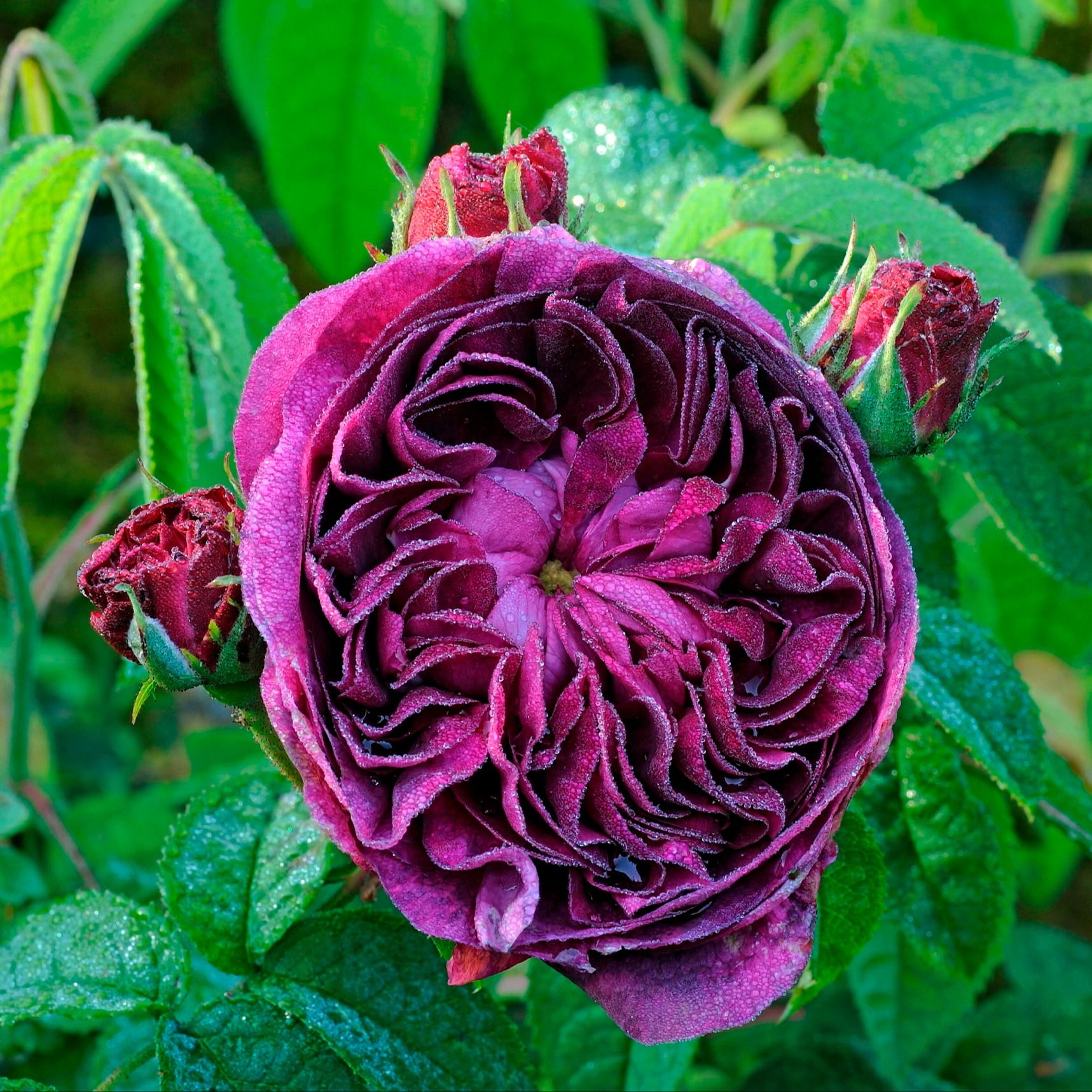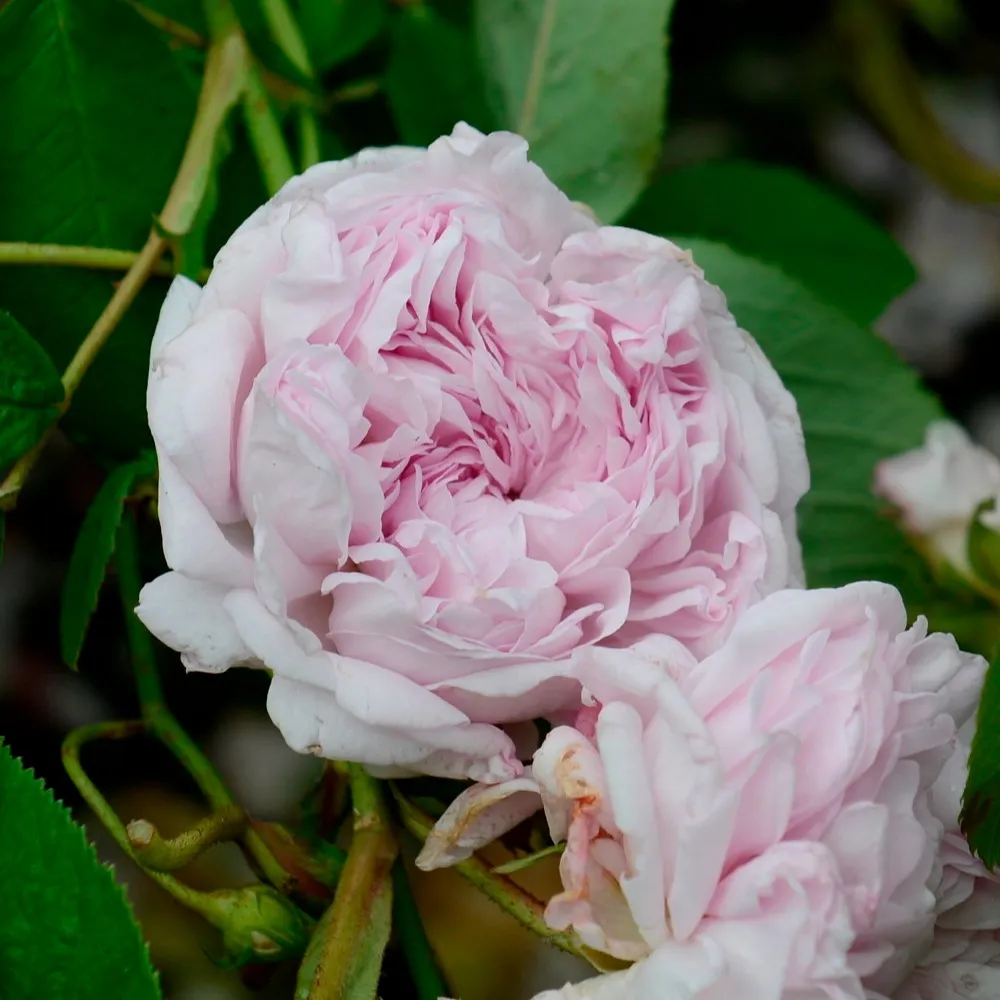This third week in June has traditionally been a top time for Britain’s roses and their visitors. Lovely pink Fantin Latour, red-and-white-flecked Ferdinand Pichard, white Madame Hardy with her green central boss: looking forward in spring, I visualise these old-fashioned roses at their best when the longest daylight fades on June 21. I say “traditionally” because the changing climate makes primetime dating hazardous.
Londoners will dissent, because this year’s mild winter and the absence of spring frost brought the city’s roses, especially climbers, into flower about seven weeks before this midsummer weekend. I use June 21 as a benchmark only, against which to calibrate change and variation.
Are roses having another vintage year? In many ways they are, even after vintage years in 2022-23, but there has been a stain on their heavy quantities of flower: frequent rain has spoiled some of them soon after they open. I was lucky, two weekends ago, to discuss the subject in an experienced group. I made up a foursome with three owners who open their fine gardens in which roses feature.
At Carolside, near Melrose on the Scottish borders, Rose Foley has built up a fine collection of older roses over many years and now holds the national collection of Gallica roses. Carolside’s garden is open this Saturday June 22 and on Sunday June 23 from 11am to 5pm. Far to the north of London, it will still be at its peak. It has an oval-shaped walled garden in which the matching of colours is outstandingly good.
At Gresgarth Hall, Caton, near Lancaster, the admired designer Arabella Lennox-Boyd opens her garden next on Sunday July 14, 11am-5pm. She uses roses as one act in its prolonged drama and she has wide experience of planting gardens in Europe and the US, and matching roses to their climates.
With her and Foley, I coalesced with Marie Claire Kerr at Melbourne Hall, Melbourne, Derbyshire, whose historic garden’s main openings are on Wednesdays, Saturdays and Sundays from 1pm to 5pm until September 29. Kerr was an apt member of our quartet because she has planted excellent roses on Melbourne’s old brick walls and has recently applied her artistic eye to two such walls in a separate area of garden, one sunny, one shaded.

Charles de Mills rose at Carolside House
Anthony Osmond-Evan
Valence Dubois, a Gallica rose bred in 1880, at Carolside House
Anthony Osmond-EvanAs the evening light complemented her selection, I reviewed their qualities and put questions to the other three, growers of many more roses than I have pleased or killed.
Dark red roses are particularly desirable. After admiring Kerr’s white City of York on a shaded wall and listening to Foley name rare pink Valence Dubois as her top Gallica, I steered the discussion on to red-flowered climbing roses, then red-flowered ramblers and red-flowered bushes. Major catalogues describe some of their roses as “bright” crimson, whereas I would call them scarlet. I wanted opinions about true crimsons, the red, red loves for which gardeners have a roving eye.
When I began to write columns I used to recommend Etoile de Hollande, to the approval of several readers who grew it north of Birmingham. It is still a fine double-flowered crimson, but it grows very tall and does not flower profusely. Kerr grows it at Melbourne but like my other participants, she wonders if it is still worth the space.
I wanted opinions about true crimsons, the red, red loves for which gardeners have a roving eye
I also used to recommend the very dark red Guinée, but the entire plant is often ruined by disease and mildew. The quartet united in rejecting it. However, my fondness for Climbing Ena Harkness survived their scrutiny. Like the bush rose of the same name, it hangs its flowers down as they open fully, but as a climber against a wall, this hanging habit allows viewers at ground level to look up into the double flowers. I still rate Climbing Ena Harkness in the first class.
On the walls at Melbourne we studied two rivals, Highgrove and Crimson Glory. Highgrove was launched on the English market in 2009 by that maestro of roses, Peter Beales. Soon afterwards I admired it on the wall to the left of the main door at Highgrove, the royal residence in Gloucestershire. After detailed observation I now see its virtues: a restrained height, a healthy habit and clusters of deep red flowers in broad heads which repeat in autumn.
At 7 or 8ft high, Highgrove is a fine choice for the walls of cosy homes. Its flower buds are dumpy. They open appealingly and in full flower make a lovely impact, but it has little or no scent and the stems are very thorny. Its other downside, Lennox-Boyd warned, is that its crimson flowers die to a dreary brown, detracting from others living on in the cluster. Targeted deadheading is essential.
We also assessed Crimson Glory, a rose bred in the 1930s and marketed since 1941. Major catalogues have kept it in the public eye, rightly, as its flowers, bigger than Highgrove’s, are fully petalled and strongly scented. It is taller, too, reaching 10ft, but the main drawback is that the flowers are readily damaged by rain and fade to purple-red, I give it high marks, nonetheless.

Should we compromise on Amadeus instead, I wondered, an excellent rose bred in Germany? It is free-flowering, rain-resistant and only about 8ft high. It flowers twice, but is minimally scented: I still stand by Crimson Glory.
Would a deep red rambler survive our critiques? Three came into the discussion, Rambling Rosie being my favourite. It bears smallish flowers on and off until late October and remains manageable at 8ft. Even on my poor soil it does not look sickly, though it is more scarlet than deep crimson. Crimson Shower is another contender, also small-flowered but one which flowers usefully later, from July to autumn. It is healthy with good glossy leaves, but the downside, we agreed, is that it has no scent.
The consensus choice was rambling Chevy Chase, small-flowered indeed but a crimson rose of vigour and very free-flowering as a clever use of it at Melbourne exemplifies. It has been planted to run far up a tall Magnolia Caerhays where its dark flowers peep out beautifully from the light green leaves. The two plants cohabit happily, a pairing worth copying with other tall magnolias.
As for crimson-flowered bushes, twice in a week I have seen fine groups of a David Austin rose, Darcey Bussell, strongly scented and only 3 or 4ft high. As we admired it at Melbourne, Lennox-Boyd reminded us that Austin’s Munstead Wood has even more heavily petalled flowers and as fine a scent. However, Austin Roses has now dropped both of them in favour of their recent Thomas à Becket, not such a rich red. When does a new rose become an old rose and why?
Lennox-Boyd reminded us of the excellent deep red Wilhelm too, a musk rose bred in Germany in 1934. She praises its clusters of semi-double deep red flowers, its healthy growth to about 4ft and its repeated season. I agree, and so do bees, but most gardeners forget it. Roses ramble as they grow, but rose lovers also ramble when they meet and profit from discussion, no longer climbing upwards, but clinging on to favourites, some at risk of being lost.
Find out about our latest stories first — follow @FTProperty on X or @ft_houseandhome on Instagram